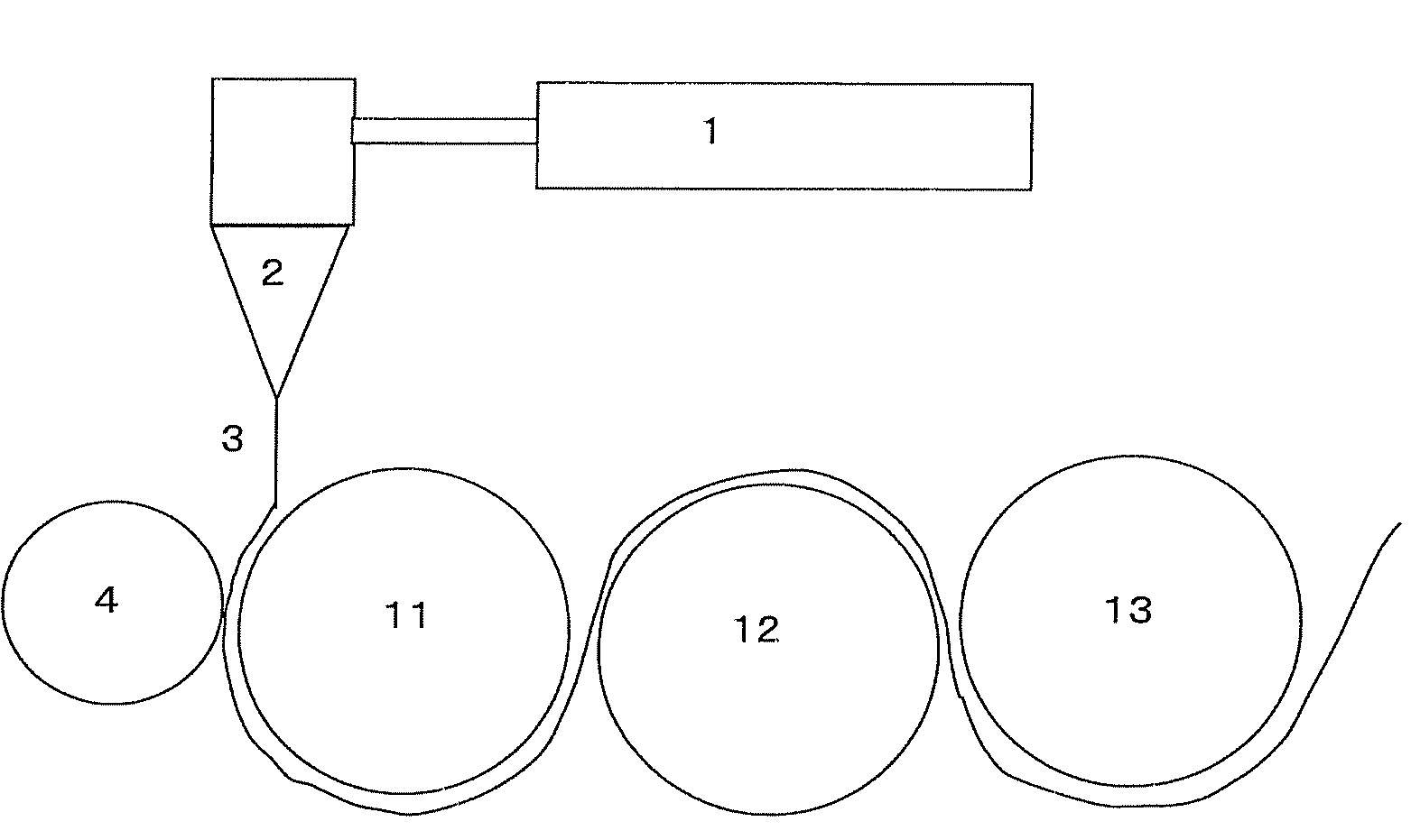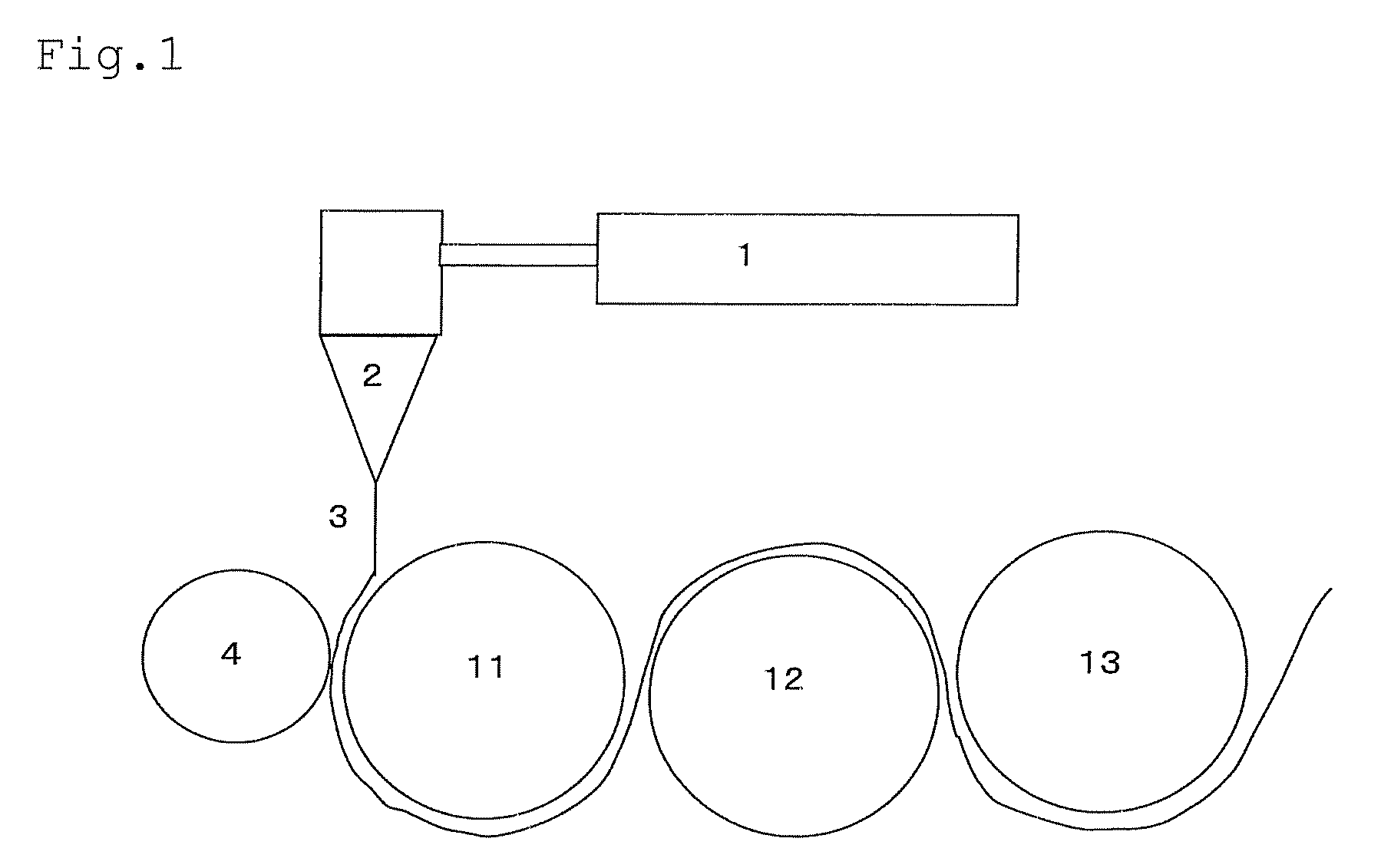Cellulose acylate film, polarizing plate, optical compensation film, and liquid crystal display device using the same
- Summary
- Abstract
- Description
- Claims
- Application Information
AI Technical Summary
Benefits of technology
Problems solved by technology
Method used
Image
Examples
example 1
1. Formation of Cellulose Acylate Film
(1) Manufacture of Cellulose Acylate
[0271]Cellulose acylates having different types or substitution degrees for acyl groups shown in Table 1 were manufactured. Sulfuric acid (7.8 parts by mass to 100 parts by mass of cellulose) was added as a catalyst, carboxylic acid which is a raw material of an acyl substituent was added, and an acylation reaction was performed at 40° C. At this time, the type and the substitution degree for the acyl group were adjusted by adjusting the type and the quantity of carboxylic acid.
[0272]21 parts by mass of an aqueous solution of carboxylic acid (at least one of acetic acid, propionic acid, butyric acid and valeric acid according to a ratio of an acyl group to the cellulose acylate shown in Table 1) was added to the solution of synthesized cellulose acylate and the mixture was maintained for 90 minutes at a temperature of 47° C., thereby maturing cellulose acetate. By changing a ratio of carboxylic acid to water, ...
example 2
(1) Manufacture of Raw Material
[0315]Similar to Example 1, the cellulose acylates having the substitution degrees and the polymerization degrees of Table 3 were manufactured. In addition, similar to Example 1, the quantity of the remaining sulfuric acid, the quantity of carboxylic acid and the content ratio of Na are shown in Table 3. However, in the present Example, a plasticizing agent and an optical adjuster were not added. The melting properties of the obtained cellulose acylates were shown in Table 3.
(2) Melt-casting Film Formation
[0316]The cellulose acylates were dried for 5 hours at 100° C. using dehumidification airstream having a dew-point temperature of −40° C. such that the percentage of water content is 0.01% by mass or less. These were put into a hopper of 80° C. and were molten by a melt extruder adjusted from 180° C. (inlet temperature) to 230° C. (outlet temperature). The diameter of a screw used herein was 60 mm, L / D=50, and a compression ratio was 4. A predetermine...
PUM
| Property | Measurement | Unit |
|---|---|---|
| Fraction | aaaaa | aaaaa |
| Fraction | aaaaa | aaaaa |
| Fraction | aaaaa | aaaaa |
Abstract
Description
Claims
Application Information
 Login to View More
Login to View More - R&D
- Intellectual Property
- Life Sciences
- Materials
- Tech Scout
- Unparalleled Data Quality
- Higher Quality Content
- 60% Fewer Hallucinations
Browse by: Latest US Patents, China's latest patents, Technical Efficacy Thesaurus, Application Domain, Technology Topic, Popular Technical Reports.
© 2025 PatSnap. All rights reserved.Legal|Privacy policy|Modern Slavery Act Transparency Statement|Sitemap|About US| Contact US: help@patsnap.com



